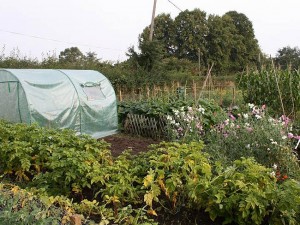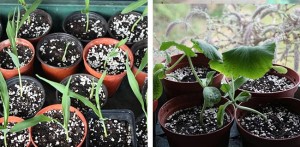At about 9ft by 6ft this is a very useful way of providing quite large protective environments without the permanence of a greenhouse (not all allotment plots allow permanent structures and others limit size). We have used ours for tomatoes and melons over the summer and then warming beds in the spring. We tended to hold the cover in place with tent pegs, tying it onto the frame, which was anchored down with weights. This had seemed adequate until we went down to the allotment today after a very wild night to find that the whole thing had been blown over the rabbit fence and it was only the trees in the corner of the allotment site that prevented it from being next stop Maidenhead. Fortunately we had no neighbours on the escape route, so no-one else’s plots were damaged.
The cover is irrepairable and the frame is buckled, but we’ll still be able to use the frame with insect/bird netting to protect fruit and brassicas
We had made a deliberate choice to have this as a moveable resource so that it could do different jobs over the year. However, we have now learnt that when the weather is worse we need to make sure that things like this (and larger cloches and nets) are properly anchored in high winds (or that the covers which catch the wind are removed as the poly tunnel one was over the winter).


